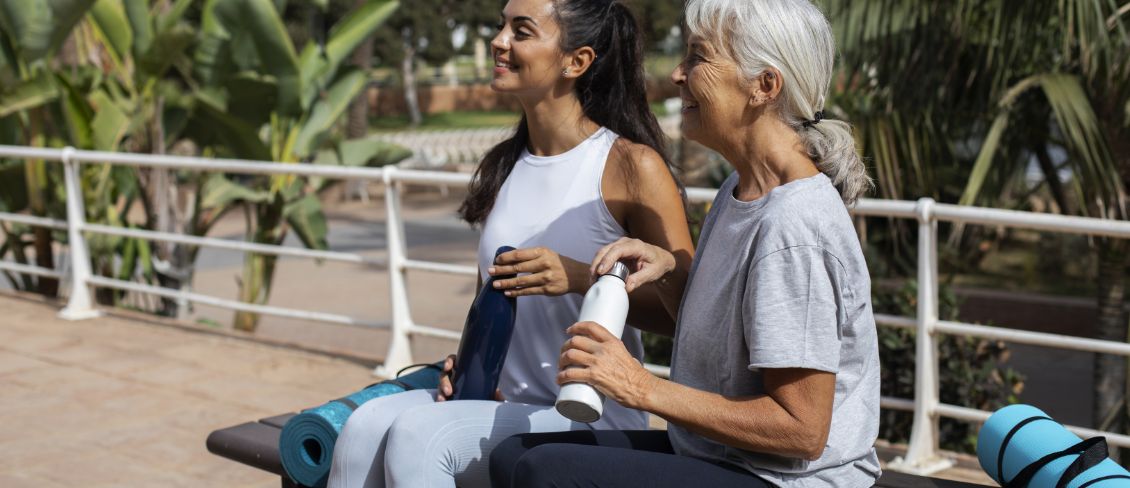Physical Activity
Exercising with cancer
Healthy choices
It doesn’t matter what stage you’re at on your cancer journey, if you are living with or beyond cancer, being physically active can help…
- Boost your general mental wellbeing1
- Lower your body fat and keep your cardiovascular system (heart and blood vessels) healthy2
- Improve social functioning, for example your ability to build relationships and engage with people at work, at home and in the world around you3,4
- Enhance cognitive function and improve your capacity to think clearly, learn, and remember5
- Extend life-expectancy and lower your mortality risk from cancer and other causes1,6
- Increase your energy levels and improve your overall quality of life1,4

Did you know?
Research has shown that individuals who are more physically active after their cancer diagnosis lead longer lives than those who are less so.1 That doesn’t mean you have to run a marathon. All kinds of physical activity (including housework, gardening, and vigorous exercise) are good for you, and can reduce your risk of other conditions such as cardiovascular disease. The trick is to find a solution that works for you.
Sources:
- Misiąg, W., Piszczyk, A., Szymańska-Chabowska, A. & Chabowski, M. Physical Activity and Cancer Care—A Review. Cancers 14, (2022).
- Hu, C., Tang, J., Gao, Y. & Cao, R. Effects of physical exercise on body fat and laboratory biomarkers in cancer patients: a meta-analysis of 35 randomized controlled trials. Supportive Care in Cancer 30, 1–12 (2022).
- Buffart, L. M. et al. Physical and psychosocial benefits of yoga in cancer patients and survivors, a systematic review and meta-analysis of randomized controlled trials. BMC Cancer 12, 559 (2012).
- Chen, Y. et al. Exercise Training for Improving Patient-Reported Outcomes in Patients With Advanced-Stage Cancer: A Systematic Review and Meta-Analysis. Journal of Pain and Symptom Management 59, 734-749.e10 (2020).
- Akbari, P. S. et al. Effect of Physical Activity During Chemotherapy on Cognitive Function in Cancer Survivors: A Systematic Review and Meta-Analysis. Physiother Can 75, 12–21 (2023).
- McTiernan, A. et al. Physical Activity in Cancer Prevention and Survival: A Systematic Review. Med Sci Sports Exerc 51, 1252–1261 (2019).




